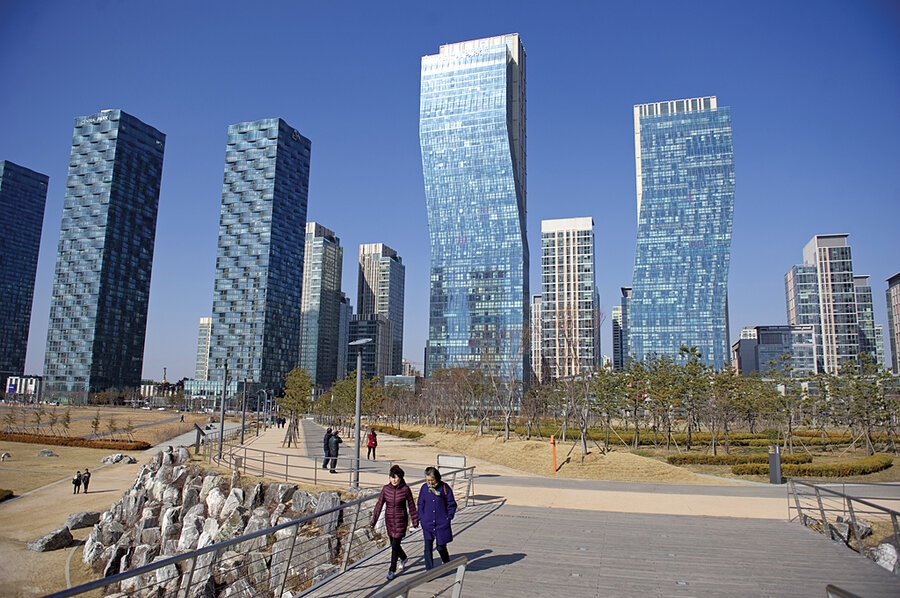South Korea's amazing rise
Loading...
Scratch the confident surface of any capital city, classroom, or business and you’ll hear the same question: How can we be more innovative? It’s a question chewed over in design studios, research labs, brainstorming sessions, and countless management books.
Innovation is the secret sauce everybody wants to bottle, the DNA of groundbreaking patents and products. It will drive the next generation of hybrid engines, solar cells, robots, and pop tunes. Innovation creates jobs, boosts trade, grows GDP.
People and cultures that believe they have an innovation deficit are not above trying to steal – or at least copy. “Fast follower” is the common term for countries adept at seeing good ideas and going them one better (and usually one cheaper). Japan, Hong Kong, Taiwan, and even the United States built up their initial industrial strength by copycatting. The US wouldn’t have been the 19th-century textile superpower that it was if not for processes and machinery pirated from Britain.
China – the colossal fast-follower of modern times – knows that if it is going to be anything other than a low-cost producer it needs to wean itself off of copying, counterfeiting, and cheating. It needs to be genuinely innovative. But how? Innovation involves an unlikely combination of careful research, preparation, productivity, and the freedom to dream up and share ideas. None of those assets works in isolation. Cool new ideas are useless if they can’t be turned into profitable products and services.
A Monitor cover story takes you on a journey into a remarkable culture that is by most estimates the first or second most innovative on the planet. South Korea isn’t a longtime, Scandinavian-type trendsetter. It doesn’t get the awe-struck adjectives of China. It was long in the shadow of the other Asian “tiger economies” – Japan, Hong Kong, and Taiwan. But almost out of nowhere, after a devastating war and with an outrageously threatening nemesis to its north, South Korea has become a worldbeating economy.
South Korea has created a uniquely vibrant, innovative culture. The Boston Consulting Group places South Korea at
No. 1 in the world in innovation, followed by the US, among larger economies. Why? The BCC points to a combination of idea generation, structure, leadership, skilled workers, and a supportive government. South Korea has something else going for it, too.
Scott Duke Harris’s report zeroes in on the national resolve that South Koreans developed after decades of brutal colonization, a war that laid waste to their peninsula, years of extreme poverty, military dictatorship, the near ruin of the 1990s Asian financial crisis, and constant threats of annihilation issued by the idiosyncratic regime to the north. South Koreans have not just survived but thrived. Companies like Samsung and Hyundai have progressed from selling cheap, me-too products to being leaders in their fields. South Koreans are confident. Democracy is entrenched. K-Pop culture is hot.
Like West Germany, South Korea has used sacrifice and adversity to its advantage. German-style reunification may be hard to imagine right now for the Koreas, but it is inevitable, if only because the North can’t keep up the charade forever. The more the South prospers, the more apparent that becomes.
So what is South Korea’s secret sauce? Creative cultures emerge from competent ones that postpone today’s pleasure for tomorrow’s gains. Innovation grows on that fertile ground.
John Yemma is editor of the Monitor. He can be reached at editor@csmonitor.com.








